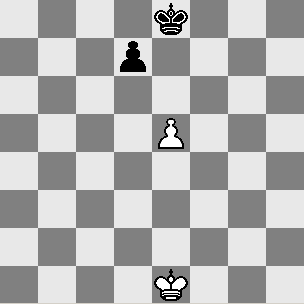Chess Rules
Generic Chess Rules
Some generic rules that you can find on wikipedia:
- White always starts first.
- King ♚ can’t move to a check case.
- If King ♚ can only move to checked cases then it’s checkmate
- If the player has to move, but all of his moves are checked cases, then it’s stalemate
Pawn Specification
- Castling: This is when King ♚ goes to the available case of its colourbefore an untouched Rook ♜. When castling, the Rook ♜ jumping over the King ♚ next to it.
- Pawn ♟ promotion: A Pawn ♟ becomes Queen ♛ if they reach the other hand of the board.
- “En passant”: Pawn ♟ can advance two cases when first move.
- En passant is a way to capture a Pawn ♟ right after it made its two cases move, going diagonal behind it with another Pawn ♟.

Notation
Algebraic Notation
It’s the method for recording and describing the moves in a game of chess. I will put here the main characteristics:
- Movements
- Be5 : move Bishop ♝ to e5
- c5 : move Pawn ♟ to c5
- Captures
- Bxe5 or B:e5 or Be5: : Bishop ♝ captures the piece on e5
- exd6e.p.: Pawn ♟ in e capturing another Pawn ♟ en passant resulting in it going to d6.
- Disambiguating moves
- Ngf3 : Indicate the letter (referred as file) of the source case (Knight ♞ in g to f3).
- N5f3 : If not enough, use the number (referred as rank) of the source case (Knight ♞ in 5 to f3)
- Qd5f3 : If the above is not enough (when with multiple Pawn ♟ promotion for example: Queen ♛ in d5 to f3)
- The capture indication should be placed in between the coordinates
- Pawn ♟ Promotion
- e8Q or e8=Q : Pawn ♟ moved to e8 and got promoted to Queen ♛
- Draw offer Not part of the Notation
- (=) : Submitting a draw offer to the opponent
- Castling
- 0-0 : Means castling toward the King ♚ side
- 0-0-0 : Means castling toward the Queen ♛ side
- Check
- † or + : to indicate the opponent’s King ♚ is in check
- Checkmate
- ‡ or # or ≠ : to indicate checkmate
- End of game
- 1-0 : the white ♔ side won
- 0-1 : the black ♚ side won
- ½–½ : it’s a draw
Board
The board is a 8x8 checker with coordinates:
a b c d e f g h
8 a8 b8 c8 d8 e8 f8 g8 h8
7 a7 b7 c7 d7 e7 f7 g7 h7
6 a6 b6 c6 d6 e6 f6 g6 h6
5 a5 b5 c5 d5 e5 f5 g5 h5
4 a4 b4 c4 d4 e4 f4 g4 h4
3 a3 b3 c3 d3 e3 f3 g3 h3
2 a2 b2 c2 d2 e2 f2 g2 h2
1 a1 b1 c1 d1 e1 f1 g1 h1
You place the Pawns ♟ like followed:

Implementation
Process
To implement such a game, you could start simple and follow TDD (Test Driven Development). For that you would start by writing a test for a simple feature, then expand and add more feature.
At each step, you first write a failing test, then make it pass, to finally refactor. The refactor part lift of the “over thinking” that may happen in the “make it pass” phase. Because first you want it to work, then you can think about any pattern, or how to make the code more readable / thinner / coherent.
That way you can come move fast and write only necessary code. You can check Refactoring by Martin Fowler. It’s a well known book about what is refactoring and how to apply it.
Example: Have a Pawn ♟ on the board
You could start with a basic test, you don’t need it to be perfect. As you write your test, the classes, and objects does not exist yet, so you can go as you want.
@Test
public void boardCanHavepawnTest() {
ChessBoard board = new ChessBoard();
pawn pawn = new pawn();
board.add(pawn, "d7");
assertEquals(pawn, board.get("d7"));
}
Then you can start implementing. I won’t go into details there, as you go the code may evolve (with pattern and encapsulation),
and you may also refactor the tests as you may not want to have the ChessBoard instantiation done in a before() method.
You may want to cover the “unhappy” path too, for example trying to add a Pawn ♟ in a9 which is not a valid position.
Example: To go further
Then once you can have Pawns ♟ on a board, you can think about what could be the next steps:
- Have a Pawn ♟ move on the board
- Add the White / Black type of Pawn ♙/♟
- Have a Pawn ♟ take another Pawn ♙
- Add specialization (Knight ♞, Rook ♜, Bishop ♝, …) which moves
- Add the possibility to take another Pawn ♟
- Add the custom moves possibility
Then you can be me more fancy and add some “display feature”, or save feature, etc … Each time following the same principle of writing a failing test, make it fail and refactor.